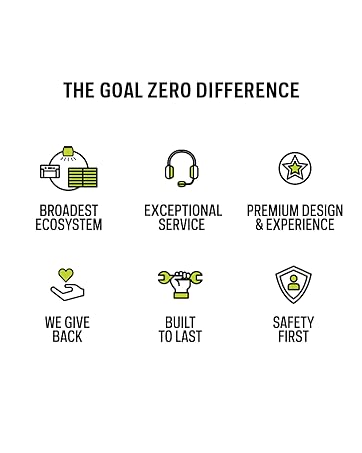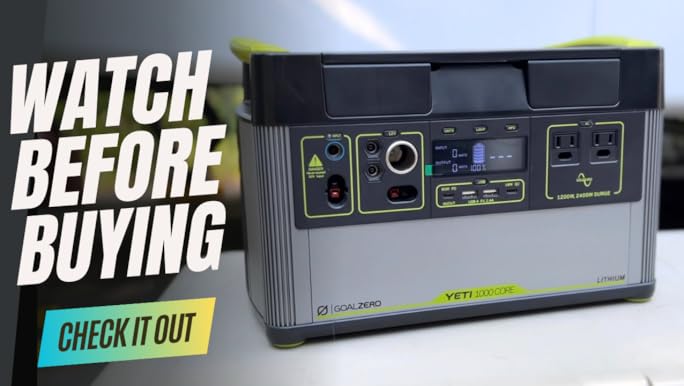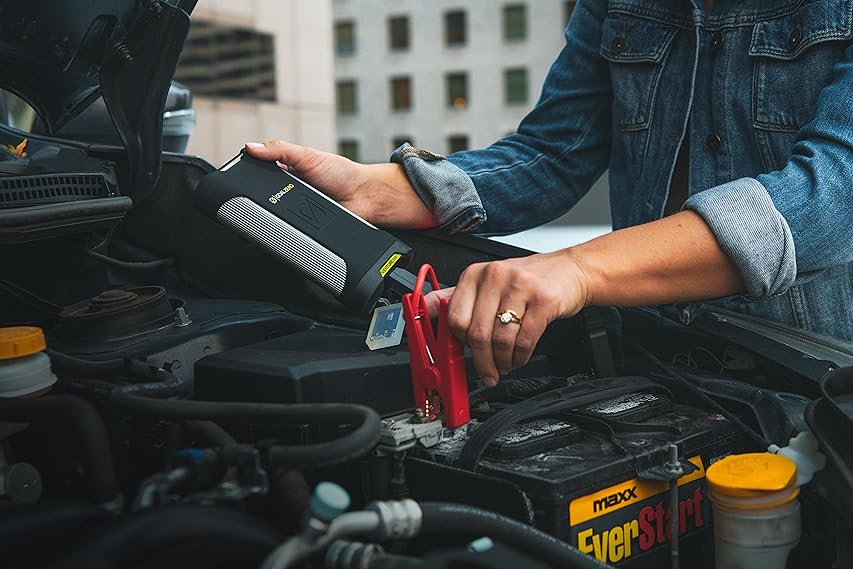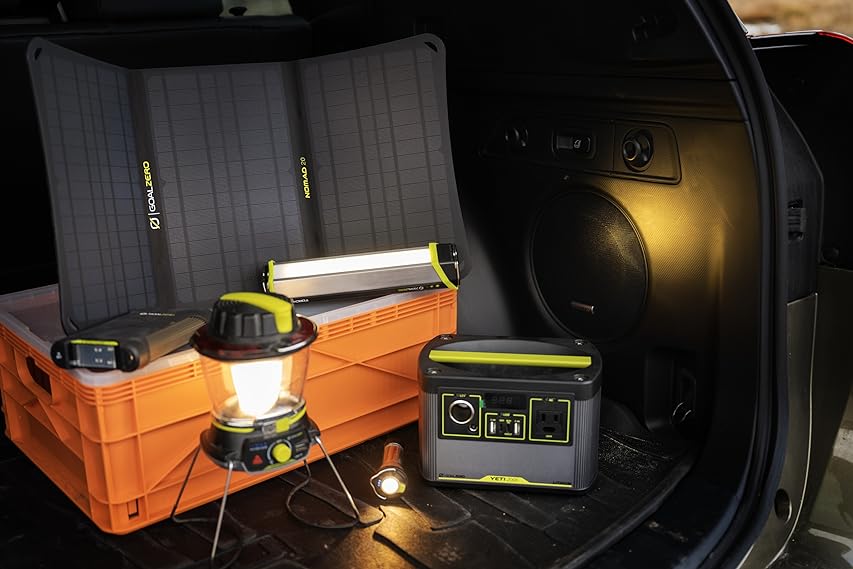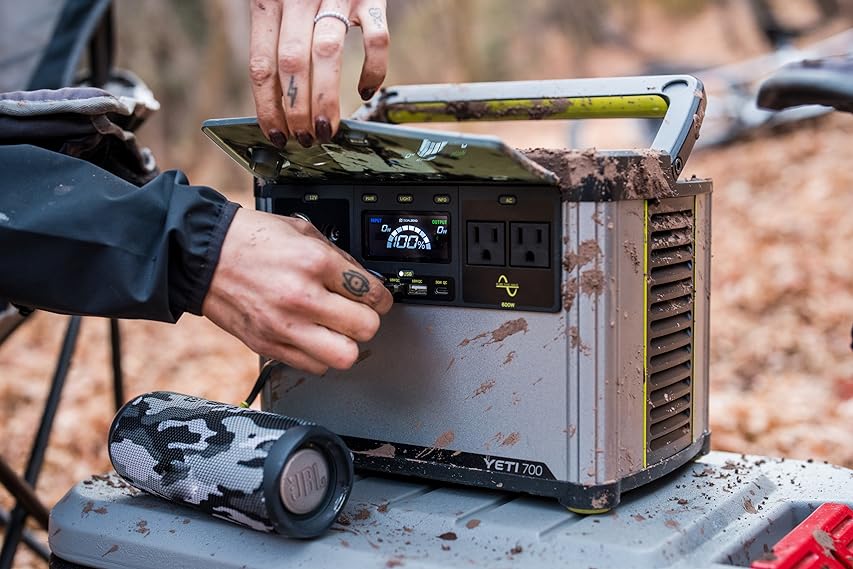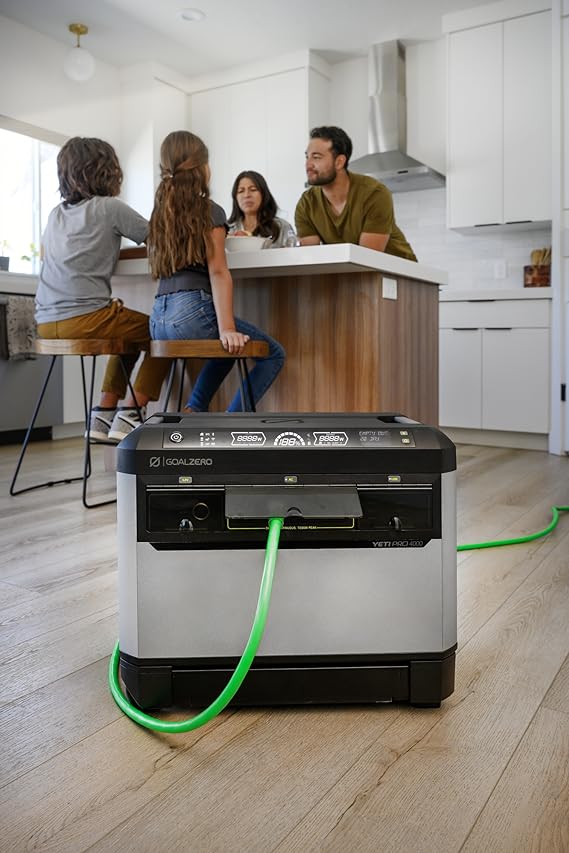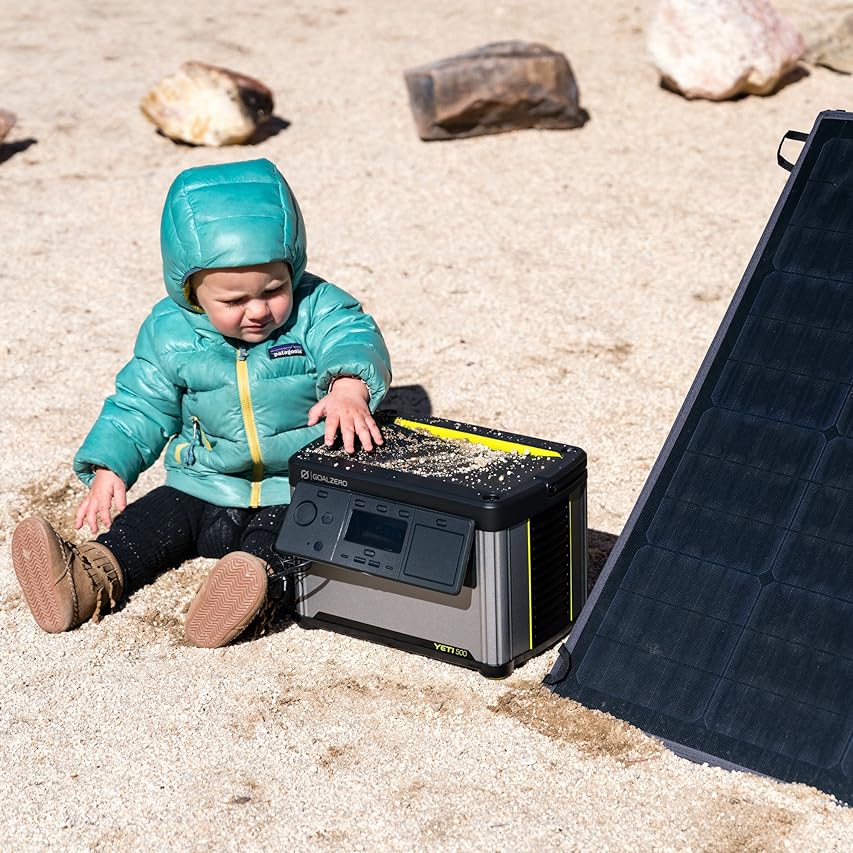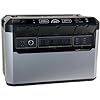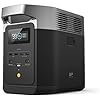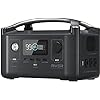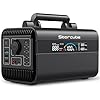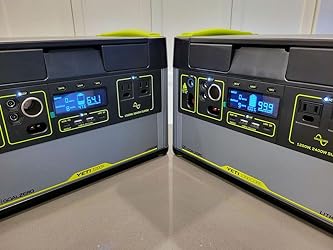| Brand | Goal Zero |
|---|---|
| Product Dimensions | 2"L x 2"W x 2"H |
| Item Weight | 25.9 Pounds |
| Connector Type | USB |
| Folded Size | 17x11.25x2.5 IN |
| Included Components | Battery, Solar Panels, Bag |
| Maximum Voltage | 12 Volts |
| Maximum Power | 50 Watts |
| UPC | 847974007792 |
| Manufacturer | Goal Zero |
| Part Number | 1000 |
| Item Weight | 25.9 pounds |
| Country of Origin | USA |
| Item model number | Yeti 1000 |
| Size | 1000X + Boulder 100 |
| Style | Yeti 1000x with 100 Watt Boulder Solar Panel |
| Power Source | Solar Powered |
| Voltage | 12 Volts |
| Wattage | 100 watts |
| Item Package Quantity | 1 |
| Special Features | Portable |
| Warranty Description | 2 years |
Image Unavailable
Color:
-

-
-
- To view this video download Flash Player
-
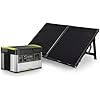
-
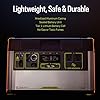
-
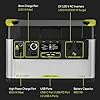
-
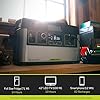
-
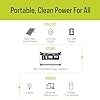
-

-
 6 VIDEOS
6 VIDEOS -

Goal Zero Yeti Portable Power Station - Yeti 1000X w/ 983 Watt Hours Battery, USB Ports & AC Inverter - includes Boulder 100 Briefcase Solar Panel - Rechargeable Generator for Camping, Outdoor & Home
| Price: | $999.95$999.95
|
Purchase options and add-ons
| Brand | Goal Zero |
| Product Dimensions | 2"L x 2"W x 2"H |
| Item Weight | 25.9 Pounds |
| Connector Type | USB |
| Folded Size | 17x11.25x2.5 IN |
About this item
- Power. Anything. Anywhere. 983 Watt Hours makes this versatile station an essential for powering devices and smaller appliances. Efficiently charge phones, laptops, camera equipment, TVs, portable fridges, medical devices, and more; includes 1 power station, 1 solar panel, 12-volt car charger, 1 wall charger and 1 user guide
- 7 Versatile Ports, 983 Wh Capacity: Power CPAP machines, WiFi routers, pellet grills and more with the Yeti 1000X, which keeps devices running efficiently with a variety of USB ports and a pure sine 1500 W (3500 W surge) AC inverter; note the Yeti 1000X integrates directly into home circuits with the Yeti Home Integration Kit (not included)
- Recharge Fully in 12-24 Hours with the Boulder 100 Briefcase Solar Panel: Turn your Yeti 1000X into a solar generator and unlock indefinite power when you combine it with the included Goal Zero solar panel; our power stations feature a MPPT charge controller (Maximum Power Point Tracking), which increases solar input by up to 30 percent
- Durable Construction, Safe Electric & Solar Power: With a heavy-duty anodized aluminum enclosure and tier 1 lithium battery cell, this electric power station will provide reliable, safe power for years to come — with super quiet operation and no gas or toxic fumes
- This Is Goal Zero: Inspired by passion for adventure, respect for the planet, and a humanitarian heart, we’re presenting a new way forward in portable power use, as well as ensuring all communities have the necessary resources to reach their full potential
You might also like
 DOKIO 160W 18V Portable Solar Panel Kit (ONLY 9lb) Folding Solar Charger with 2 USB Outputs for 12v Batteries/Power Station AGM LiFePo4 RV Camping Trailer Car Marine……Amazon's Choicein Solar PanelsFREE Shipping by AmazonGet it as soon as Thursday, Jul 11
DOKIO 160W 18V Portable Solar Panel Kit (ONLY 9lb) Folding Solar Charger with 2 USB Outputs for 12v Batteries/Power Station AGM LiFePo4 RV Camping Trailer Car Marine……Amazon's Choicein Solar PanelsFREE Shipping by AmazonGet it as soon as Thursday, Jul 11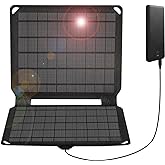 FlexSolar 10W Portable Solar Chargers 5V USB Small Power Emergency ETFE Panels Foldable IP67 Waterproof Camping Hiking Backpacking for Phones Fans Flashlight Watches Small Power Banks Battery PacksFREE Shipping on orders over $49 shipped by AmazonGet it as soon as Thursday, Jul 11
FlexSolar 10W Portable Solar Chargers 5V USB Small Power Emergency ETFE Panels Foldable IP67 Waterproof Camping Hiking Backpacking for Phones Fans Flashlight Watches Small Power Banks Battery PacksFREE Shipping on orders over $49 shipped by AmazonGet it as soon as Thursday, Jul 11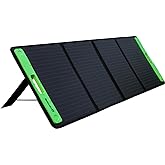 Topsolar 200W Foldable Portable Solar Panel Charger Kits for Portable Power Station Generator Cell Phones Camera Lamp 12V Car Boat RV Battery(Dual USB Ports & 19/14.4V DC Output)FREE Shipping by AmazonGet it as soon as Friday, Jul 12
Topsolar 200W Foldable Portable Solar Panel Charger Kits for Portable Power Station Generator Cell Phones Camera Lamp 12V Car Boat RV Battery(Dual USB Ports & 19/14.4V DC Output)FREE Shipping by AmazonGet it as soon as Friday, Jul 12 SimpliSafe Solar Panel for Outdoor Security Camera,WhiteAmazon's Choicein Bullet Surveillance CamerasFREE Shipping by AmazonGet it as soon as Thursday, Jul 11
SimpliSafe Solar Panel for Outdoor Security Camera,WhiteAmazon's Choicein Bullet Surveillance CamerasFREE Shipping by AmazonGet it as soon as Thursday, Jul 11
From the brand

-

We are leaders in portable power
Goal Zero created the portable power station category over 10 years ago, presenting a new way forward in portable energy use at home, on the job, and off-grid. Our products are engineered with precision here in the U.S. Every feature has a purpose, designed with a real-life use case in mind. Power everything from campsites to field work to essential circuits in the home during an outage.
-

-

-

-

-
-
-
-

-

-

Product Description

 Yeti 1000X
Add to Cart
| 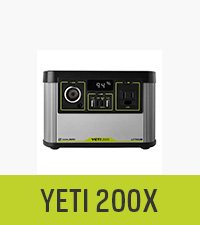 Yeti 200X |  Yeti 500X |  Yeti 1500X |  Yeti 3000X
Add to Cart
|  Yeti 6000X
Add to Cart
| |
|
Customer Reviews
|
4.3 out of 5 stars
65
|
4.5 out of 5 stars
448
|
4.6 out of 5 stars
22
|
— |
4.4 out of 5 stars
92
|
4.5 out of 5 stars
47
|
|
Price
| $999.95$999.95 | — | — | — | $2,843.82$2,843.82 | $4,353.80$4,353.80 |
|
Light-a-Life
| 219 Hours | 42 Hours | 112 Hours | 337 Hours | 674 Hours | 1336 Hours |
|
Phone Recharges
| 82 | 16 | 42 | 127 | 253 | 501 |
|
Tablet Recharges
| 33 | 6 | 17 | 51 | 101 | 201 |
|
Laptop Recharges
| 20 | 4 | 10 | 31 | 61 | 120 |
|
Camera Recharges
| 55 | 11 | 28 | 84 | 169 | 334 |
|
CPAP
| 15 Hours | - | 8 Hours | 24 Hours | 47 Hours | 93 Hours |
|
Grill
| 17 Hours | - | 9 Hours | 26 Hours | 51 Hours | 100 Hours |
|
Television
| 10 Hours | - | 5 Hours | 15 Hours | 31 Hours | 60 Hours |
|
Fridge
| 14 Hours | - | - | 21 Hours | 43 Hours | 85 Hours |
How long will the Yeti run my device?
Check our Yeti comparison chart above and reference product pages. To calculate yourself, divide the Yeti wattage by the device wattage. For example, a 500 Wh battery should run a 100 W light for 5 hours (500/100=5).
How do I know if my device will work with the Goal Zero Yeti?
Determine the amount of power your device requires. Then, check the capacity for the individual output ports to ensure it can safely handle that amount of power. Also, watch for the surge rating of your device as compared to that of the port.
Can I chain multiple Goal Zero solar panels into a Yeti X?
Yes, our panels are designed to be safely chained together and eliminate the risks associated with 3rd party panels. Please note that some solar panels require an additional accessory cable in order to chain together. See specific product pages.
How long will my power bank or power station hold a full charge if unused?
If unused, power banks and power stations can hold a full charge for 12-14 months. However, we highly recommend using and charging the battery every 3-4 months for a healthy lifespan. If possible, plug the device into a wall while storing.
How do I backup my home with Goal Zero?
Back up to 4 essential circuits in your home by having the Yeti Home Integration Kit installed by a certified electrician with a Yeti 1000 power station or larger. Note the Yeti Link and Yeti Tank expansion batteries can increase battery storage.
Videos
Videos for this product

1:07
Click to play video

Is It Worth It? - Goal Zero Yeti Portable Power Station!
Matt & Chy

Videos for this product

2:51
Click to play video

Goal Zero Skylight lights up your campsite for Overlanding
HikerJ

Videos for this product

1:55
Click to play video

My Honest Review of My Goal Zero Power Station!
⭐Lewis Johnson Products⭐

Videos for this product

1:05
Click to play video

Perfect to have as backup & for outdoors
Curious Customer

Videos for this product

0:32
Click to play video

Yeti 1000X Built for your essential devices and appliances
Goal Zero LLC
Looking for specific info?
Product information
Technical Details
Additional Information
| ASIN | B098TQTYT1 |
|---|---|
| Customer Reviews |
4.3 out of 5 stars |
| Best Sellers Rank | #188,981 in Patio, Lawn & Garden (See Top 100 in Patio, Lawn & Garden) #694 in Outdoor Generators |
| Date First Available | May 17, 2022 |
Warranty & Support
Feedback
Inspiration from this brand
Important information
60 watts
100 watts
12 volts
Customer reviews
Customer Reviews, including Product Star Ratings help customers to learn more about the product and decide whether it is the right product for them.
To calculate the overall star rating and percentage breakdown by star, we don’t use a simple average. Instead, our system considers things like how recent a review is and if the reviewer bought the item on Amazon. It also analyzed reviews to verify trustworthiness.
Learn more how customers reviews work on AmazonReviews with images
-
Top reviews
Top reviews from the United States
There was a problem filtering reviews right now. Please try again later.
First and foremost, the Yeti 1000X provides you with a reliable source of power in situations where traditional outlets are unavailable. This is especially valuable when you're camping in remote locations or facing power outages during emergencies. The 983-watt-hour battery capacity is substantial, and it allows you to charge various devices multiple times. Whether you need to recharge your smartphone, power a laptop, or run essential medical equipment, this power station has got you covered.
One of the standout features of the Yeti 1000X is its compatibility with solar panels. You can harness the power of the sun to recharge the power station, providing an eco-friendly and sustainable energy source. This is not only great for reducing your carbon footprint but also ensures that you have power even in extended off-grid situations. This capability is a game-changer for environmentally conscious campers and preppers.
The multiple USB ports and AC inverter offer versatility for all your devices. You can charge smartphones, tablets, laptops, cameras, and more, ensuring that you stay connected and powered up no matter where you are. The inclusion of an AC inverter makes it possible to run small appliances and power tools, expanding its usefulness far beyond simple device charging.
In addition to its functionality, the Yeti 1000X is also highly portable. It features a rugged design with a comfortable carry handle, making it easy to transport to your campsite or keep it on hand during emergencies. Its compact size and lightweight design make it practical for both indoor and outdoor use.
The build quality and reliability of Goal Zero products are well-known, and the Yeti 1000X lives up to that reputation. It is durable and designed to withstand the rigors of outdoor use. Goal Zero's customer support and warranty add an extra layer of assurance, providing peace of mind for your investment.
In conclusion, the Goal Zero Yeti 1000X Portable Power Station is a versatile, dependable, and eco-friendly power solution that excels in camping, travel, and emergency situations. Its impressive battery capacity, solar compatibility, and ability to power a wide range of devices make it a valuable addition to your outdoor gear. It's a reliable companion that ensures you have the power you need when and where you need it, making it a must-have for anyone seeking independence from traditional power sources
First, I question whether it's a true sine wave inverter. I used it with one device, and while using it after a while the device would power off. It happened multiple times. I switched the device over to an inverter on a bank of marine batteries, and the problem was gone. This wasn't a particularly power hungry device, but it was a scientific instrument. So I question whether the goal zero produces a noisy, non-sine wave power.
I hardly ever use it, and it still looks brand new. But I used it enough when I first got it, and occasionally every once in a while, and it never seems to be reliable.
Update: even the 12V socket is NOT reliable. I tried using the 12V socket to power an inflatable paddleboard pump. This time, it's not a fancy scientific device. These just need basic 12V DC power. I tried 4 different makes/models of pumps. All tests were at home indoors in air conditioning (so the Goal Zero shouldn't be over-heating). Two of the four pumps did not work with the Goal Zero. As soon as you turn on the pump, the light on the Goal Zero's 12V button goes red and it cuts power to the socket. I can reset the Goal Zero's 12V button/red light, but the same thing happens as soon as I turn on the pump. A second pump (different make/model) behaves exactly the same. Both pumps work fine though on a 20A 12V socket on an actual vehicle. These pumps don't draw that much current and should operate fine within the Goal Zero specs. What's annoying is that two other pumps (different makes/models) do work on the Goal Zeros 12V socket. So it seems like it's 50/50 chance if the Goal Zero ever works when I need it to. So again, the Goal Zero's problem is that it's not reliable as a portable battery power source.
Seems like others are also reporting reliability issues. I'll try and update my review after contacting support and seeing if there is an easy fix, or if this will require sending in for a warranty fix. I've seen on online forums that their warranty fixes can take months to resolve though.





















